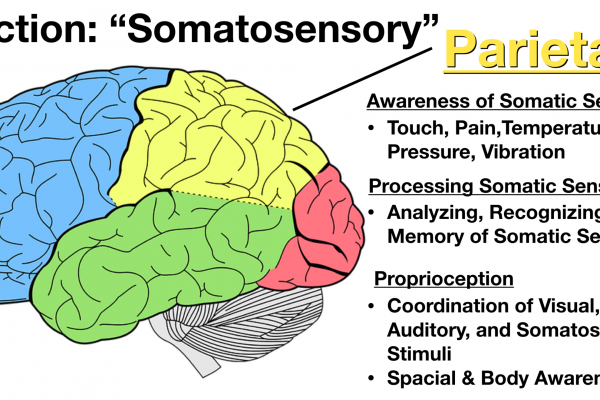Is Your Parietal Lobe All Fired Up?
Posted Mar 27, 2023 at 10:01
Posted Mar 27, 2023 at 10:01

As I've highlighted in previous blogs, we have many different areas of the brain that are all responsible for many different functions. As the brain is the most important organ in the body and controls everything, the different lobes work together to control functions like heart rate, breathing, blood pressure, digestion, eye movements, as well as movement and coordination of our limbs.
The area I want to highlight today is the parietal lobe. We each have a left and right parietal lobe, but one will be more dominant than the other. As around 90% of the population are tight handed, 90% of the population will have a dominant left parietal lobe.
Each parietal lobe is split into 4 sections. The primary and secondary motor areas are responsible for interpreting information from our body, predominantly our limbs. This information is about touch, pressure, proprioception, vibration, pain, and temperature.
The inferior lobe is responsible for certain parts of our vision, but more so the control of it. Testing whether your eyes can track an object smoothly from left to right, or your ability to reach out and grab an object in front of you will test this area of the brain. Conditions such as dysgraphia or dyscalculia can be due to deficits in this area. Dysgraphia is similar to dyslexia, but rather than affecting a person's ability to read, it affects their ability to write. They may write letters the wrong way round, or put capital letters in the middle of words, or not be able to write in a straight line. Dyscalculia is similar again, except it relates to numbers. A person may struggle with simple mathematical equations, especially when asked to do them mentally. They may also have difficulty counting backwards, or be very slow when working with numbers. They may also have aprosodia, meaning they will be unable to express emotion in their voice, and will sound very monotone all the time.
The superior lobe is different, depending on whether it's in the dominant or non dominant hemisphere. The non dominant hemisphere is responsible for certain actions like being able to identify where a stimulus is on the body, so knowing which part of the body has been touched. Constructional apraxia may be present, so the person may not be able to draw 3D shapes such as a cube, or draw two shapes overlapping. Hemineglect is another condition that may be present. If so, the person will not have a ‘map’ of one side of their body in their brain, so they will only be aware of what's happening on one side. With this, you may see men with only half their face shaved, or someone only brushing half their hair, or only putting make up on one side of their face.
The superior area of the dominant parietal lobe is similar to the inferior lobe for some things. Agraphia, acalculia, alexia, and aphasia and more complete versions of dysgraphia, dyscalculia, dyslexia, and aprosodia. If the deficit is in the parietal lobe the person may be able to read, write and do maths, but will struggle and will be slower. If the deficit is in the superior lobe, the person may lose the ability to do these things completely.
There are many other functions that each of these areas of the parietal lobe are responsible for, so it is important that it is functioning properly. Each of these things is very easy to assess, but the rehabilitation for each may look different.
If you or anyone you know suffers with any symptoms mentioned here, then get booked in for a full consultation and we can assess which are of the brain is not functioning properly, and give you a tailored recommendation to get you back to full health and function!